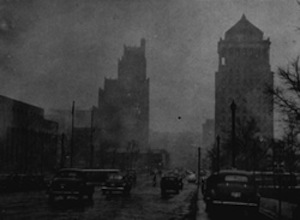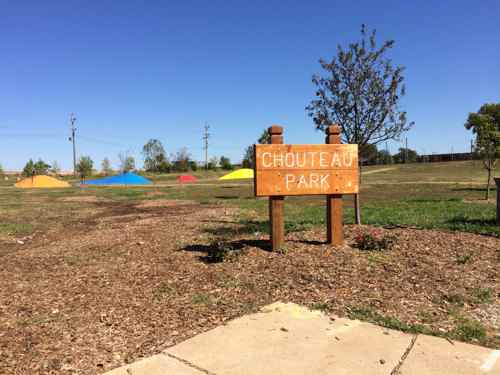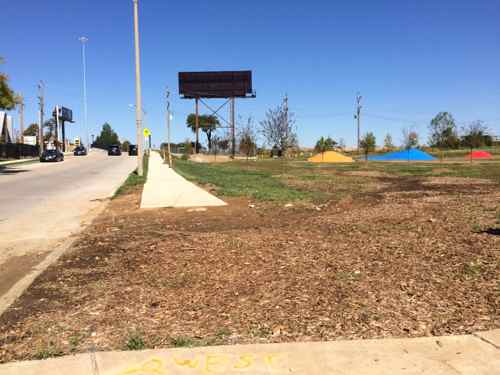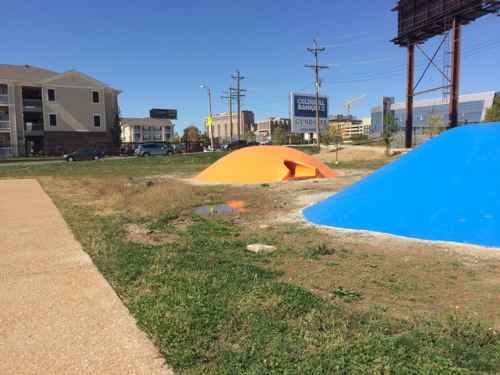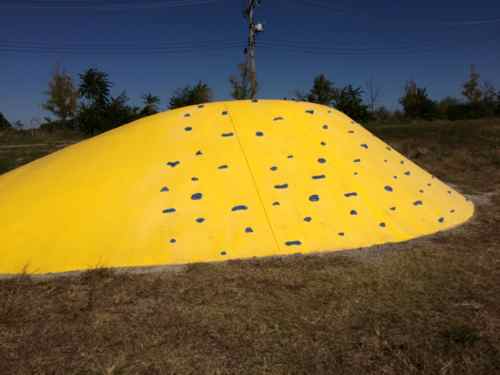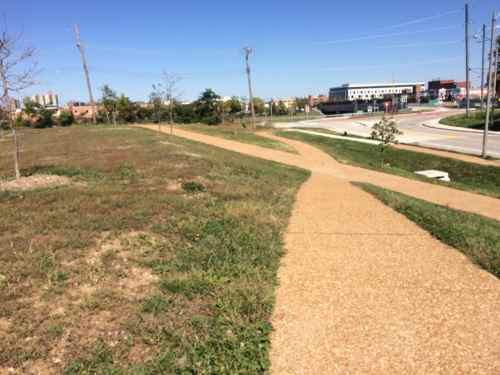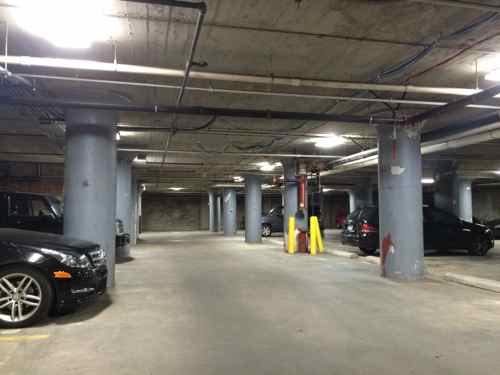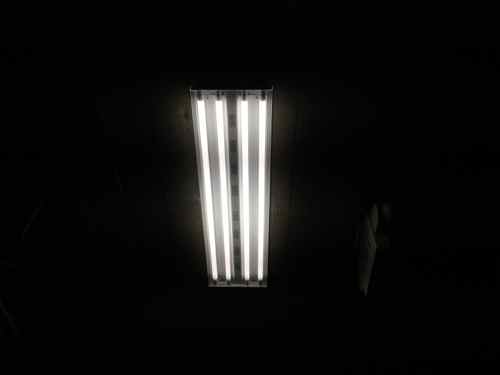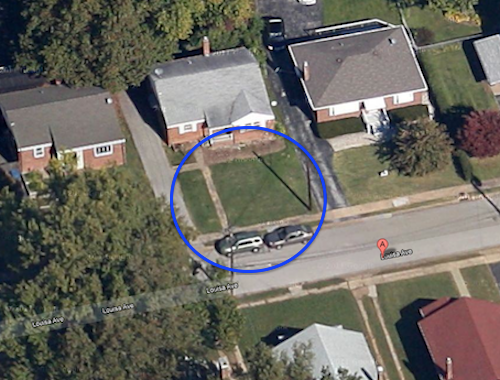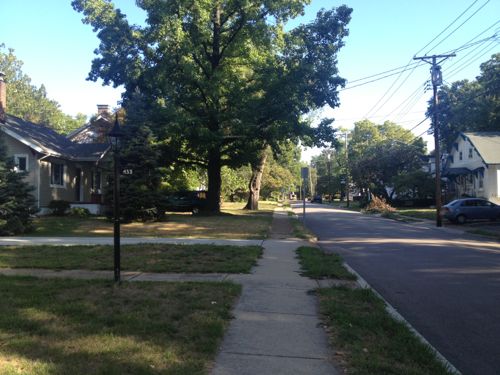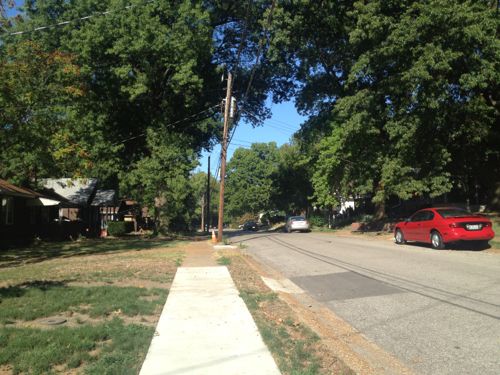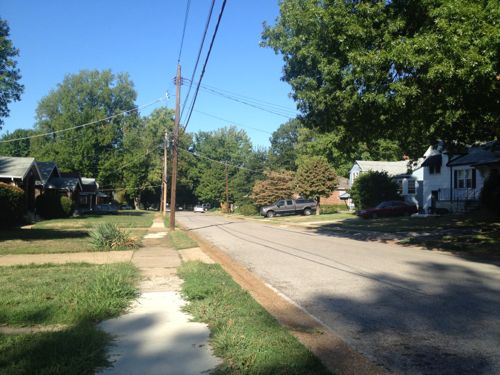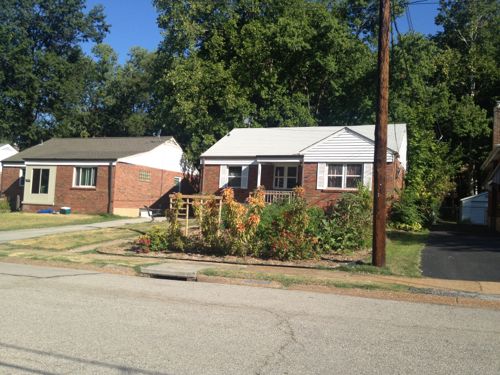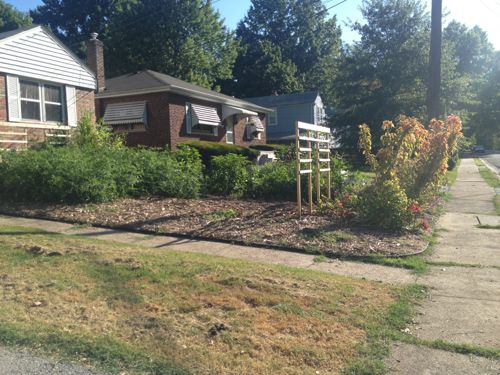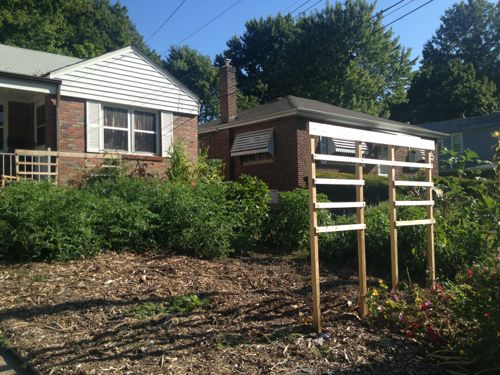Broken Zipper: Washington Ave Street Tree Wells
The Washington Avenue streetscape, completed about 15 years ago, was designed to visually play tribute to the area’s history as a garment district:
Through the ’30s and ’40s, St. Louis had one of the largest needle-trade centers in the country—second, many said, only to New York—and was the center of manufacture for junior-size dresses. (St. Louis Magazine)
So Washonhgton Ave was given a zipper motif. But in the last 15 years the very expensive streetscape’s design elements haven’t always been respected. Most recently the street trees.
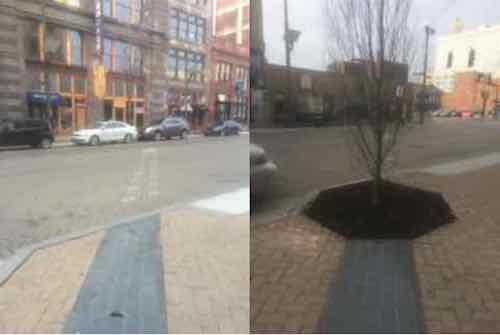
The street trees never did well because the costly streetscape was designed with style over function — too small of a surface area to collect rainwater. After removing the dead/dying trees extra grates were used to cover the holes where the original trees were planted, which kept the design motif intact.
If the the new trees survive perhaps it’s worth sacrificing the design, still visually jarring after all these years.
— Steve Patterson
